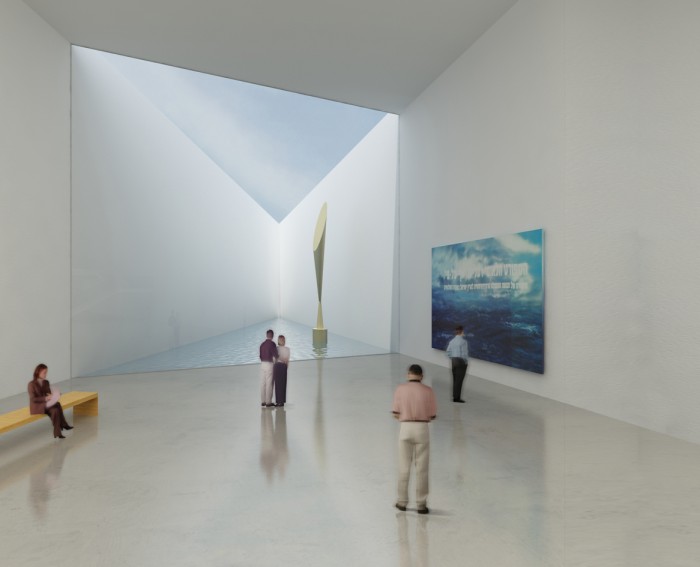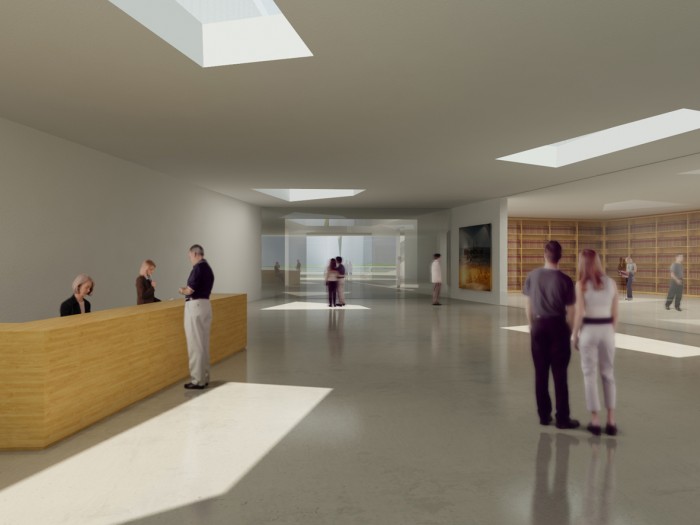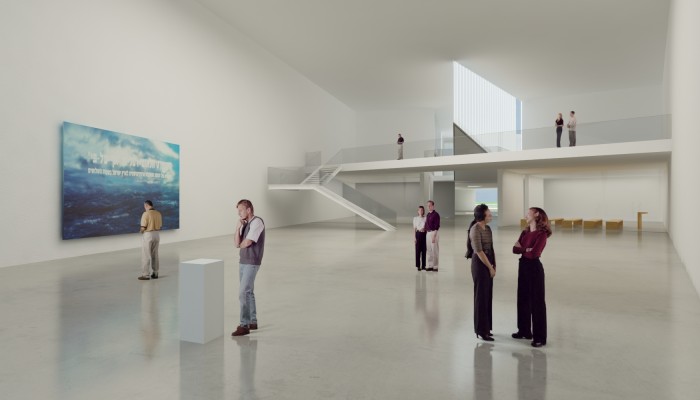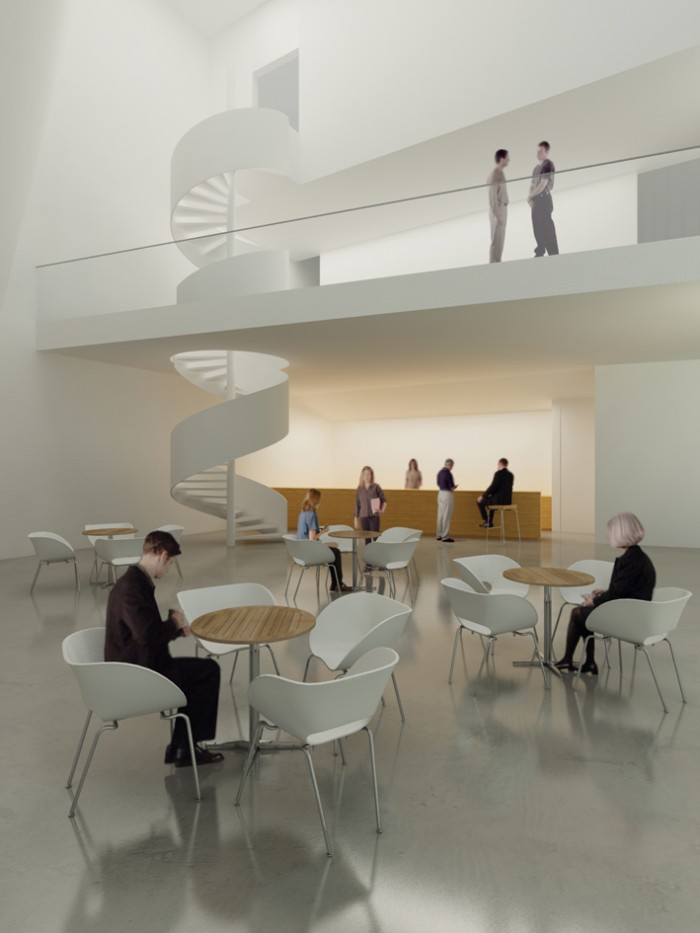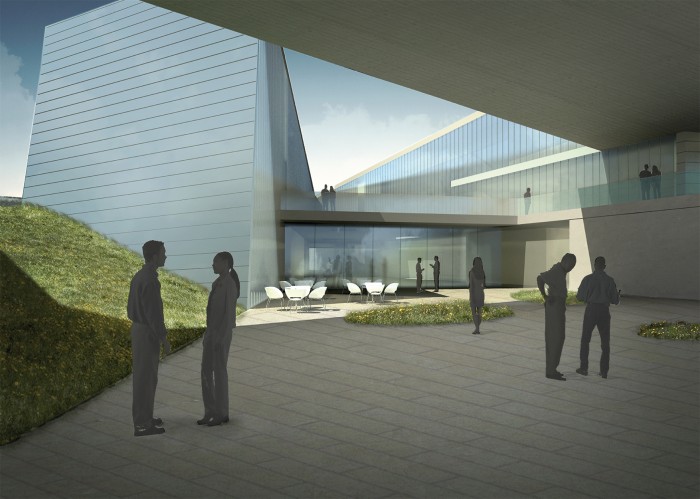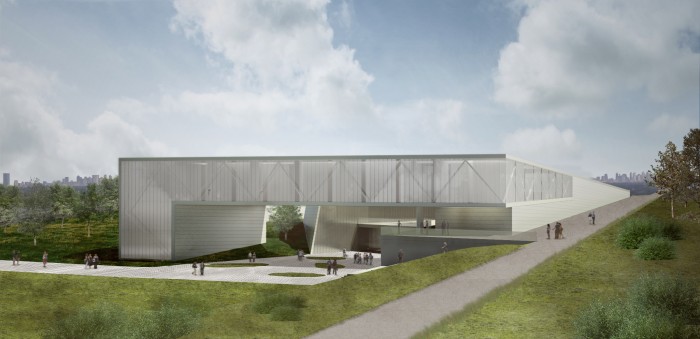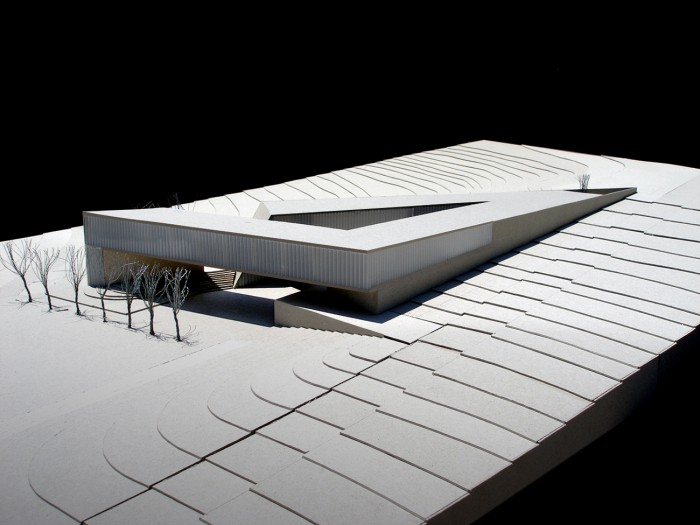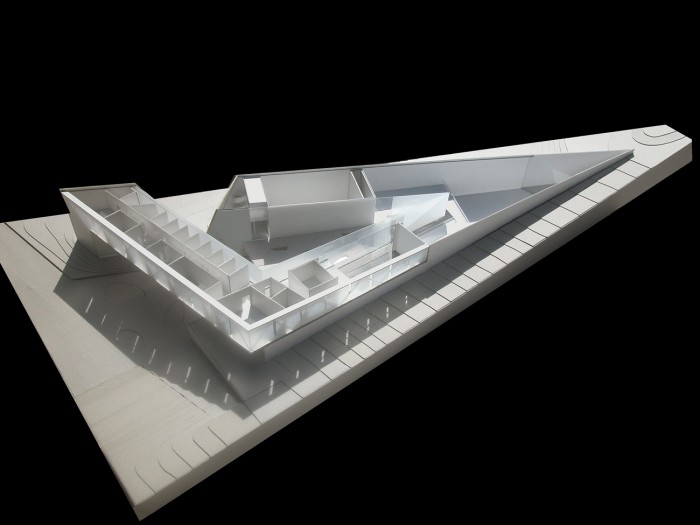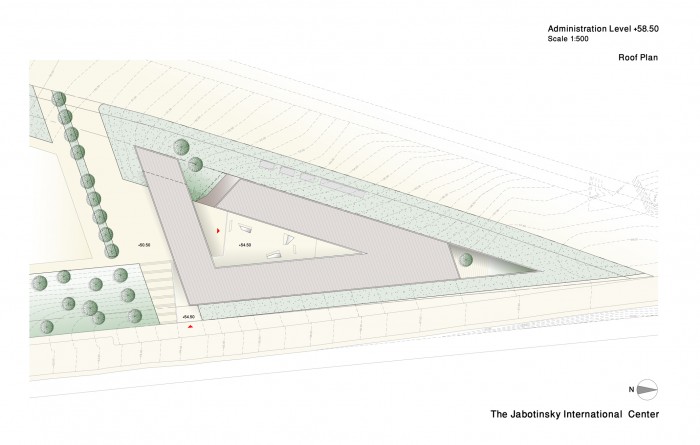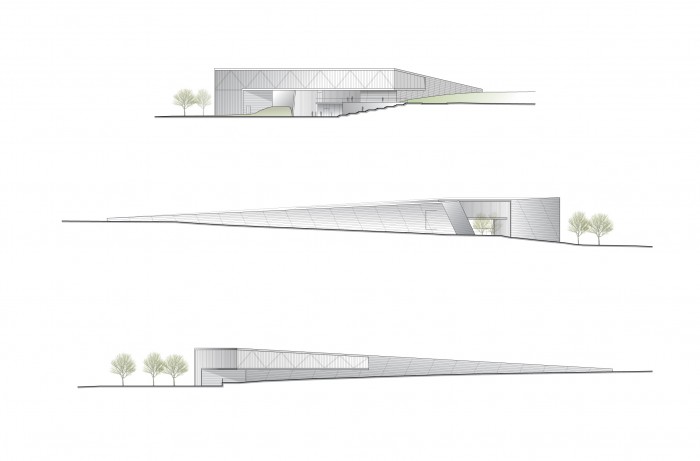The Jabotinsky Institute engages in archival collation and display of materials connected with Ze’ev Jabotinsky and with the underground Jewish nationalist movements prior to the establishment of the State of Israel. The building will be erected in Ramat Gan, on a triangular plot with roads on either side of it and its apex pointing to an intersection. The base of the triangle faces a public space to be shared by two other public buildings whose function has as yet not been decided. The building is designed as a spearhead pointing towards the intersection, from which it rises towards the urban expanse, bursting out of the depths of the ground. The volume design projects power and momentum as well as an ascetic simplicity devoid of ornamentation.
The museum has three levels. The ground level contains a foyer, a library, and a main exhibition hall that opens onto a sunken garden and study rooms for groups of visitors. Looking down over the main exhibition hall are two upper galleries that enclose a large sculpture yard between them. Entry into the building is from a plaza shared by all the public buildings at the site, to a plaza belonging to the Institute, and from there to the foyer. The wing of offices, on the third storey, is designed as a bridge over the entrance plaza, spatially defining the transition from the public plaza to the Institute’s plaza.
Client: The Jabotinsky Institute
Area: 5,000 sq.m


